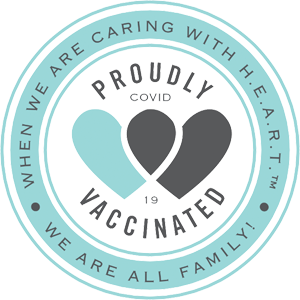Eating well is important for good health at any age, but even more so in older adults. Balanced nutrition is necessary for health, quality of life, and overall wellness. Unfortunately, many seniors don’t eat as well as they should, which often leads to malnutrition.
Changes That Affect Nutrition
There are many ways our bodies change as we get older that can influence our eating, nutritional intake, and overall health.
Hearing, smell, and taste diminish with age and all three can cause difficulty with appetite and eating. Specifically, taste buds diminish, causing healthier foods to taste bitter or sour. This can lead to less consumption of fruits and vegetables and more sweet and salty foods.
Energy decreases due to a slowing metabolism, which decreases calorie needs.
Loss of teeth or ill-fitting dentures can cause discomfort while eating certain foods, so we might start avoiding hard or sticky food. Because of this, most uncooked fruits and veggies will be skipped.
Chronic gastritis, constipation, delayed stomach emptying, and gas may also lead to avoiding fruits and vegetables in the diet.
This explains why over 3 million seniors suffer from malnourishment. It also sheds light on the importance of educating caregivers and aging seniors on the importance of a well-balanced diet.
Improving Nutrition for Seniors
Getting good nutrition should be a part of every holistic preventive care program because it is so crucial for overall health and well-being.
Most healthcare professionals recommend following a nutritional program such as the Dietary Guidelines for Americans, from the U.S. Department of Agriculture (USDA) and the Department of Health and Human Services (HHS). It outlines two eating plans:
- The USDA Food Patterns
- The DASH (Dietary Approaches to Stop Hypertension) Eating Plan
Recommended Daily Nutrition for Seniors
The USDA Food Patterns plan encourages people 50 or older to choose healthy meals every day from the following categories:
- Fruits — 1½ to 2 ½ cups
Example: A 2-inch peach or ¼ cup of dried fruit. - Vegetables — 2 to 3½ cups
Example: 2 cups of uncooked leafy vegetables. - Grains — 5 to 10 ounces
Example: A muffin, a slice of bread, a cup of flaked cereal, or ½ cup of cooked rice or whole-grain pasta - Protein foods — 5 to 7 ounces
Example: 1 egg, ¼ cup of cooked beans, ½ ounce of nuts or seeds or 1 tablespoon of peanut butter. - Dairy foods — 3 cups of fat-free or low-fat milk
Example: 1 cup of yogurt or 1½ to 2 ounces of cheese. 1 cup of cottage cheese is the same as ½ cup of milk. - Oils — 5 to 8 teaspoons
Example: Olives, nuts, and avocado are rich in healthy fats/oils. - Solid fats and added sugars (SoFAS) — keep the amount of SoFAS small
If you eat too many foods containing SoFAS, you are eating empty calories with little nutritional value. Use them sparingly.
You can learn more about the U.S. Department of Health and Human Services’ DASH eating plan to decide whether it’s right for your loved one.
Want more information about our nutritional plans? Give our team of care professionals a call today to book your tour of our community!



